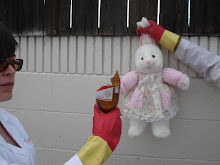The Salton Sea:
Yellowstone National Park:
Yellowstone is a SUPERVOLCANO! Or Supaire Volcano. Yellowstone Park in northwestern Wyoming sits atop a large caldera that heaves and hoes up and down about 1.5 centimeters per year. This “breathing” in and out of the caldera makes me nervous, for one, but is indicative of what’s going on in the magma chamber below. As pressure increases and decreases, the land rises and falls. This will happen until the caldera explodes and obliterates everything from here to kingdom come. The good news is that eruptions are estimated to be several hundreds of thousands of years apart. We humans can blow ourselves up by then, thank you very much Yellowstone.
Willamette Valley, Oregon:

What’s so interesting about this little valley? Well, besides being a rich and bountiful place to grow agriculture, this valley was formed by the backlogging of water after the Great Missoula Floods. The Missoula Floods are floods of unimaginable proportion that roared across western North America at the end of the last glacial – about 18,000 years ago. Seriously, you can’t even imagine how crazy huge these floods were. So huge that the entire Willamette Valley served as a holding tank for water that was dumping into the Pacific Ocean via the Columbia River. Looking at the satellite image gives you some perspective of how much water that must have been. It was a lot. Like, a lot a lot.
See, places can be fun sometimes!




No comments:
Post a Comment